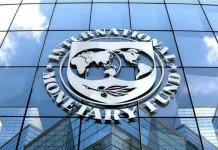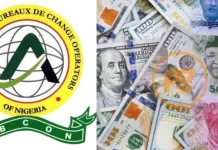The announcement on Wednesday of interest hike by the Federal Reserve has started causing stocks to slip.
Wall Street’s week of turmoil is closing with sharp drops for stocks on Friday as worries worsen about the banking industry and fears rise that it could drag the economy into a recession.
All three indexes of S&P 500, the Dow Jones and Nasdaq composite were close to flat before the announcement.
The S&P 500 was 0.9% lower in afternoon trading, cutting into its gain for the week.
The Dow Jones Industrial Average was down 332 points, or 1%, at 31,911, as of 1:18 p.m. Eastern time, while the Nasdaq composite was 0.6% lower.
Higher Rates Taming Inflation
In its effort to drive inflation the Fed raised its key overnight rate by a quarter of a percentage point, the same size as its last increase.
The move was exactly what Wall Street was expecting.
The bigger question was where the Fed is heading next. The Fed gave a hint it may not hike rates much more as it assesses the fallout from the crisis hitting the banking industry.
Higher rates can indeed help tame inflation by slowing the economy, but they raise the risk of a recession later on. They also hurt prices for stocks, bonds and other investments. That latter factor was one of the issues hurting Silicon Valley Bank, which collapsed last Friday.
The Fed also released the latest set of projections from its policy makers on where rates are heading in upcoming years. The median forecast had the federal funds rate sitting at 5.1% at the end of this year, up only a smidge from where it currently sits, in a range of 4.75% to 5%.
That’s also the same level as seen in December, and it’s counter to worries in the market that it could rise given how stubborn high inflation has remained.
That helped to send yields slumping in the bond market, which has been home to some of the wildest action this month.
Pressure On The Banking System
The yield on the two-year Treasury, which tends to track expectations for the Fed, tumbled to 3.99% from 4.13% per cent just before the projections were released. It was above 5% earlier this week, and a drop that size for the bond market is a massive one.
The yield on the 10-year Treasury, which helps set rates for mortgages and other important loans, fell to 3.49% from 3.61% late Tuesday.
Silicon Valley Bank also suffered from what’s called a bank run, where its customers began pulling money out at the same time in a debilitating cascade. Since then, investors have been hunting for what bank may be next to fall, and regulators around the world have been trying to strengthen confidence in the industry.
A worry is that too much pressure on the banking system, particularly among the smaller and mid-sized banks at the centre of investors’ crosshairs, would mean fewer loans to companies across the country.
That in turn could mean less hiring and less economic activity, raising the risk of a recession that many economists already see as high.
Powell said that such a pullback in lending could act almost like a rate hike on its own.
And that was one of the reasons the Fed opted to raise by only 0.25 points instead of 0.50 points.
He also said that he sees the banking system overall as strong and sound.






